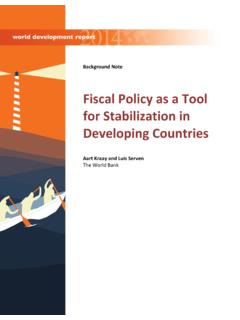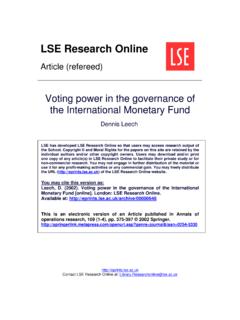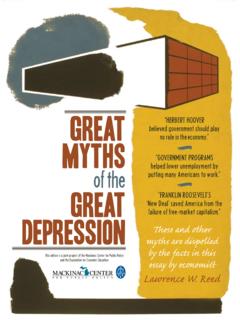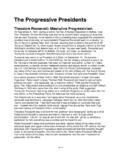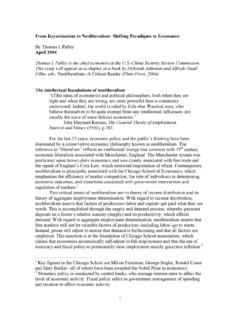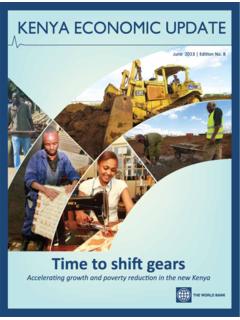Transcription of Monetary policy approaches in India
1 74 BIS Papers No 31 Monetary policy approaches in India Kaushik Bhattacharya1 1. Introduction Among country-specific studies on Monetary policy frameworks, a study on India would be important. This is not only because of the large size of its population or economy, but because a few specific features make India a unique case study among countries. Although India consistently maintained a democratic form of governance, prior to the 1990s its economic framework was largely similar to that of a command and control economy. During the past 20 years or so, the Indian economy has oriented itself towards market forces, with a healthy rate of GDP growth and a modest rate of inflation. This change had been gradual and except for the balance of payments crisis during 1990-91, has come with minor hiccups. Given that this period is characterised by frequent financial crises in large parts of the world, the Indian experience and the role played by the Monetary framework in it can be a valuable lesson in preventing financial crises, and also in pacing and sequencing economic reforms.
2 The story of economic reforms in India has been discussed in detail by several researchers from different perspectives (Joshi and Little (1996); Ahluwalia (2002); Pangariya (2004); Rodrik and Subramanian (2004)). Specific aspects like reforms in Monetary and financial sectors in India and the role played by the Reserve Bank of India (RBI) in this endeavour have also been reviewed in some of these studies. Some reviews, like Reddy (1999), were specifically devoted to the financial sector reforms and listed the changes in detail. A few studies have also documented the evolution of Monetary policy frameworks and taken a view on the applicability of specific frameworks in the Indian context (Mohanty and Mitra (1999); Kannan (1999); McKibbin and Singh (2000); Jadhav (2003)). Of late, some studies - mostly by current and ex central bankers - have begun to take a futuristic look, critically assessing the changes and raising issues of concern (Rangarajan (2001); Mohan (2005a,c)).
3 Aspects of the past and future of Monetary policy in India and the framework under which it operates can also be gleaned from the speeches of the RBI management, sometimes on a general note (Reddy (2001a, 2005)) and sometimes on more specialised areas like central bank independence (Reddy (2001b)) or communication strategies (Mohan (2005b)). Reports of different advisory groups appointed by the RBI also summarise the changes in specialised areas like transparency in Monetary and financial policies (RBI (2000a)), or data dissemination (RBI (2001a)). These reports often review country experiences and are valuable sources to analyse India s relative strengths and weaknesses among countries. With such a plethora of information, the purpose of this paper is neither to repeat the story of Indian financial sector reforms, nor to tell the story of the evolution of its Monetary policy framework.
4 Although aspects of these will inevitably crop up in what follows, they are discussed from the perspective of identifying new lessons on the grey areas of economic theory. 1 An earlier draft of the paper was prepared when the author was a post-doctoral fellow at the University of Bonn, Germany. Detailed comments and suggestions by Hans Genberg, Eli Remolona, Dominique Dwor-Fr caut, R B Barman and Dipankor Coondoo substantially improved the exposition. The author is also grateful to conference participants in Hong Kong for raising a few relevant issues not discussed in sufficient detail in an earlier draft. Views expressed in this paper are strictly personal and may not be those of the institution to which the author belongs. BIS Papers No 31 75 The paper argues that the Indian experience could be of help in expanding our knowledge on two problems.
5 The first relates to the choice of Monetary policy strategy by a central bank. In the theoretical literature, the choice of Monetary policy strategy is often seen as part of an optimal control problem (Poole (1970)). The optimal strategy in this problem depends on issues like the stability of demand for money and the relative variances of shocks to the real and the financial sector. Empirical observations, however, do not match this theory. Central banks that swear to different Monetary policy strategies have been found to use similar instruments and to react to shocks in a similar manner. The puzzle could be resolved either by admitting the possibility that central banks do not practice what they preach, or by incorporating closed-loop strategies in place of open-loop These explanations, however, do not provide the answer to the question why central banks do make efforts to identify their Monetary policy strategy in the first place.
6 Citing the example of Germany, Hagen (1999) suggested the possibility that Monetary strategies are helpful in solving internal and external coordination problems for the central bank. A major purpose of this paper is to examine whether the Indian experience is consistent with this theory. What makes India an especially attractive case to examine the generality of the theory is the fact that the Monetary policy framework in India has changed twice since the 1980s. The paper attempts to show that, from both a theoretical and a cross-country perspective, the changes occurred at interesting points. In both cases, the change in Monetary policy framework in India took place without substantial changes in the RBI Act, so that apparently the stated objectives of Monetary policy in India remained the same. However, the operating environments at those two points in time were sharply different.
7 The first change occurred during the heyday of command and control era, while the second took place when the so-called first-generation reform in India was near completion. Interestingly, in each case, the change occurred at points where it is possible to argue that there was no immediate urgency to act. The RBI s motivation for the change in both cases, therefore, could throw up some interesting insights on the central bank s strategic preferences in diverse conditions. The second grey area in literature where the Indian experience could be of additional help is in understanding to what extent the Monetary policy framework helps in improving economic performance. Both country-specific and cross-country experiences do not provide clear answers to this problem (Mishkin 1999)). Country-specific studies indicate that switching to inflation targeting (IT) has sometimes been followed by a dramatic reduction in inflation.
8 However, due to post hoc fallacy, to what extent the change in Monetary framework is responsible for this reduction is not easy to The general conclusion appears to be that both transparency and accountability are crucial to constraining discretionary Monetary policy so that it produces the desired long-run outcome (Mishkin (1999)). As the details of transparency and accountability are difficult to quantify, this is a serious impediment in obtaining definitive results. The Indian experience might throw up some interesting insights on the role of the Monetary framework because rather than a dramatic cutoff, the fall in inflation in India had been gradual. Among emerging market countries, its performance in containing inflation - especially after the adoption of MIA (the multiple indicator approach, see below for details), 2 An open-loop Monetary policy strategy is one that fixes an intermediate target during a given period with no regard to incoming information during that period.
9 A closed-loop strategy, in contrast, continuously revises the intermediate target (which may be explicit or implicit) based on incoming information to achieve better control over the ultimate targets of Monetary policy . Admitting closed-loop strategies implies that central bank behaviour is similar under different strategies and that the performance of Monetary strategies in terms of the target variables of Monetary policy becomes very similar, provided the ultimate goals of Monetary policy are the same. 3 For example, in the case of New Zealand, there is evidence that inflation was already falling sharply before the final change to IT occurred (Brash 1999)). 76 BIS Papers No 31 appears to be good. As India is not a formally declared inflation targeting economy, this observation assumes additional importance. A juxtaposition of the Indian versions of transparency and accountability to other economies with diverse Monetary policy frameworks may perhaps extract what aspects of them are essential for better economic performance.
10 The paper is organised as follows: Section 2 provides a brief review of the evolution of the Monetary policy framework in India . Our special emphasis in this review is on the possible motivations that have led Indian policymakers to change the framework twice since the 1980s, culminating in the MIA. Section 3 examines to what extent the Indian experience can extend our knowledge about the role of the Monetary policy framework in economic performance. Finally, Section 4 concludes the paper. 2. Evolution of the Monetary policy framework in India The first and most important part of the Monetary policy framework in a country is the task mandated to the Monetary authorities. In a democracy, this task is typically specified in the central bank act. It is interesting to note that despite overwhelming changes in the financial sector in India , the mandate to the Monetary authorities in India mentioned in the Reserve Bank of India Act 1934 has remained unchanged.










